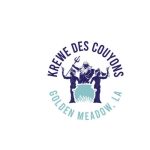
Krewe des Couyons parade rescheduled for Sunday
February 6, 2024
Fletcher Technical Community College To Host 2024 Precision Ag Summit
February 7, 2024Beginning on or around August 15, 2024, NHC will begin issuing an experimental version of the cone graphic that includes inland tropical storm and hurricane watches and warnings in effect for the continental United States.
Recommendations from social science research suggest that the addition of inland watches and warnings to the cone graphic will help communicate inland wind risk during tropical cyclone events while not overcomplicating the current version of the graphic with too many data layers. There will be opportunities to provide feedback during the product’s experimental phase. Owing to the experimental nature of the graphic, it may not be available as soon as the current operational cone graphic due to the time needed to compile complete inland watch and warning information, but should generally be available within 30 minutes of the advisory release.
The current operational cone graphic will continue to be available, and there will be no changes with respect to how coastal watches and warnings are displayed on that graphic. The new experimental graphic will be available on the NHC website for both full and intermediate advisories.
A detailed definition of the NHC track forecast cone is also available here.
Frequently Asked Questions
1. What exactly is changing with the cone graphic?
This experimental version will add a depiction of tropical storm and hurricane watches and warnings over inland areas in the continental United States. Previously, the cone graphic only showed watches and warnings in a line along the coastline of the affected area. In addition, the experimental version of the cone will use white transparent shading for the entire 5-day forecast, instead of using white stippling for the 4-5-day portion of the forecast (as is shown in the current operational version), and the entire outline of the cone will be in white.
2. What is not changing with the cone?
The other features of the experimental cone graphic will look the same as the operational cone graphic. As mentioned above, the 3-day and 4-5 day track areas that are denoted with different hatching on the operational graphic have been combined into a single 5-day track area (white) on the experimental graphic.
The operational cone graphic will remain unchanged in 2024 other than the annual minor adjustment of the cone size based on recent NHC track forecast errors. The operational cone graphic has always depicted coastal tropical storm and hurricane watches and warnings along with the track cone itself.
3. Is it true that the cone of uncertainty will be less visually prominent over land in favor of the watches/warnings?
The watch and warning depiction will be predominant on the graphic, therefore watches and warnings in effect for land areas will take precedence over the cone.
4. Will there be a change in how international watches and warnings are depicted?
No. The new experimental cone will depict inland tropical storm and hurricane watches and warnings in the U.S. only. There will be no changes to the operational cone with respect to how international coastal watches and warnings are displayed.
5. I remember reading a study about the confusion regarding the cone graphic. Is that why you are making the change or is this for another reason?
The addition of inland watch and warning information on the cone graphic is to help users understand their risk of strong winds during tropical cyclone events. Recommendations from several social science research studies suggest that the addition of inland watches and warnings will help alleviate misinterpretation of the cone as being related to one’s risk of strong winds.
6. If so, do you have any statistics or data behind it?
A recent unpublished study of alternative cone variations found that the inclusion of inland wind risk information on the cone graphic decreased focus on the storm track and increased focus on wind hazard information compared to the versions of the cone without inland watches and warnings.
7. Were there any particular storms as the impetus (i.e., Hurricane Ian, etc)?
The impetus was to better depict the full scope of the wind hazard over inland areas. This is most critical for strong hurricanes that can carry tropical storm and hurricane force winds well inland, but it will improve the risk communication for wind hazards for all tropical cyclones.
8. Will this go into effect this year? Or will this be experimental for a few years first?
This new cone graphic will be experimental when it is implemented around midway through the 2024 hurricane season. Comments from users will be solicited and evaluated during this experimental phase. That feedback will inform any future decisions about possible operational implementation.
9. Are you considering any other changes to the cone graphic?
NHC is reviewing additional social science research on the cone of uncertainty and gathering feedback from customers and partners to evaluate other potential modifications to the product. The primary goal is to find ways to simply and effectively communicate tropical cyclone risk without making the graphic too complicated.










